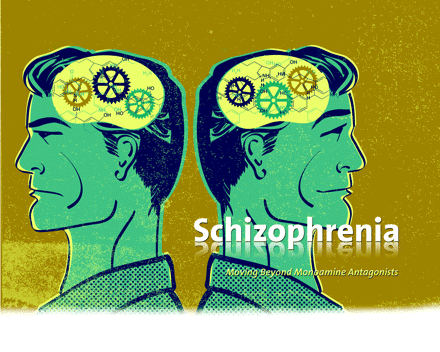Schizophrenia
Moving Beyond Monoamine Antagonists
Abstract
Schizophrenia is a disabling psychiatric disorder characterized by positive, negative, and cognitive symptoms. The first pharmacological treatments for schizophrenia were discovered by serendipitous, albeit carefully documented, clinical observations. The discovery of chlorpromazine and other dopamine D2 receptor antagonists as antipsychotic agents set the early course of drug discovery in the context of schizophrenia and other psychiatric disorders, and various monoamine receptors became the prime focus of neuropharmacological studies. Success in treating the positive symptoms nevertheless remained limited by the general lack of efficacy in addressing negative symptoms and cognitive impairment. In recent years, several new experimental approaches have emerged for the identification and treatment of different symptom clusters that do not rely on blockade of monoamine receptors. Muscarinic, nicotinic, and glutamatergic signaling mechanisms have become essential to neuropharmacological and behavioral models of discrete aspects of schizophrenia. And as a consequence of these insights, novel drug entities have become available to study and potentially treat the disabling cognitive and negative symptoms of psychiatric disease. Current attempts to target a new range of receptors entail unprecedented fine-tuning in the pharmacological manipulation of specific receptor subtypes.

- © American Society for Pharmacology and Experimental Theraputics 2008



